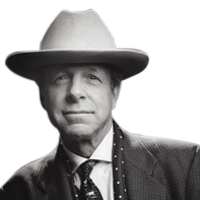Politics
Kevork Djansezian/Getty
George W. Bush Presidential Library: An Impressive Return
Presidential Nostalgia
The exhibits at his new presidential library provide the proof. Take a tour with Bush media adviser Mark McKinnon.

Trending Now
Crime & JusticeUnshaven Luigi Mangione Shows Signs of Stress in Court
Crime & JusticeLuigi Mangione Judge Married to Former Healthcare Exec





